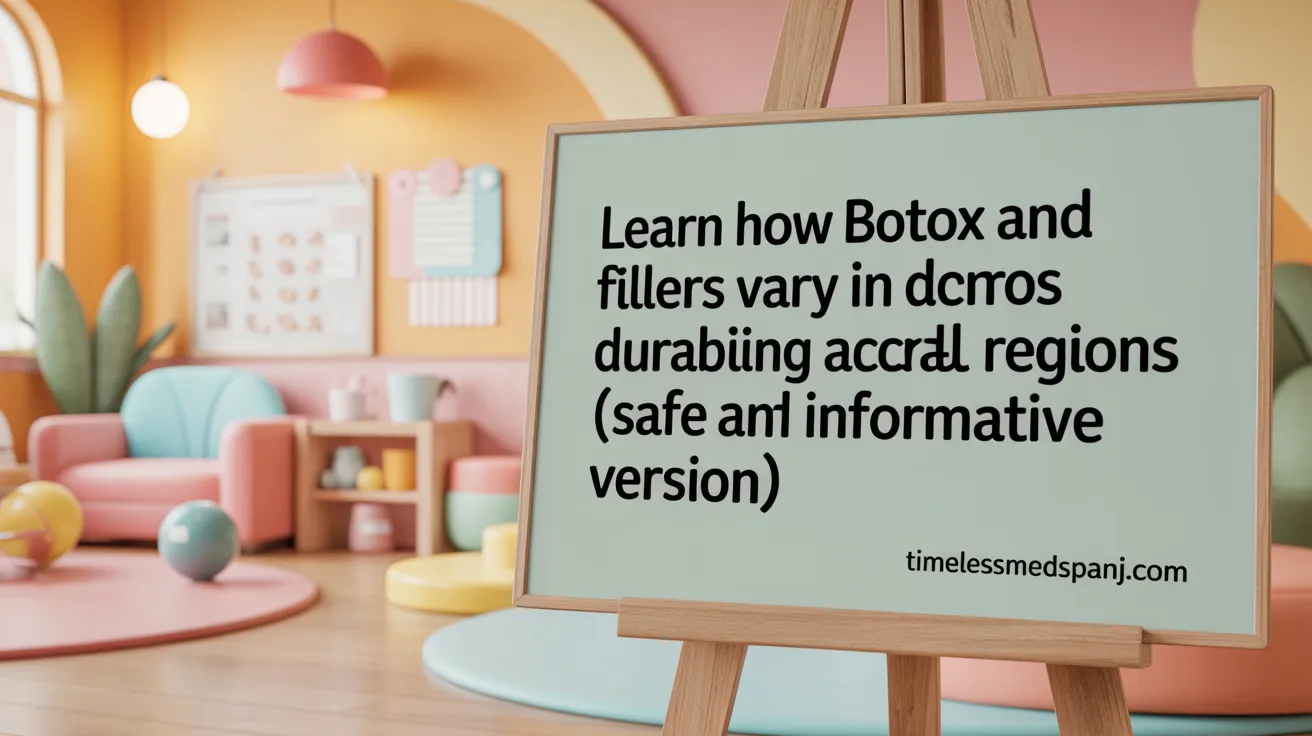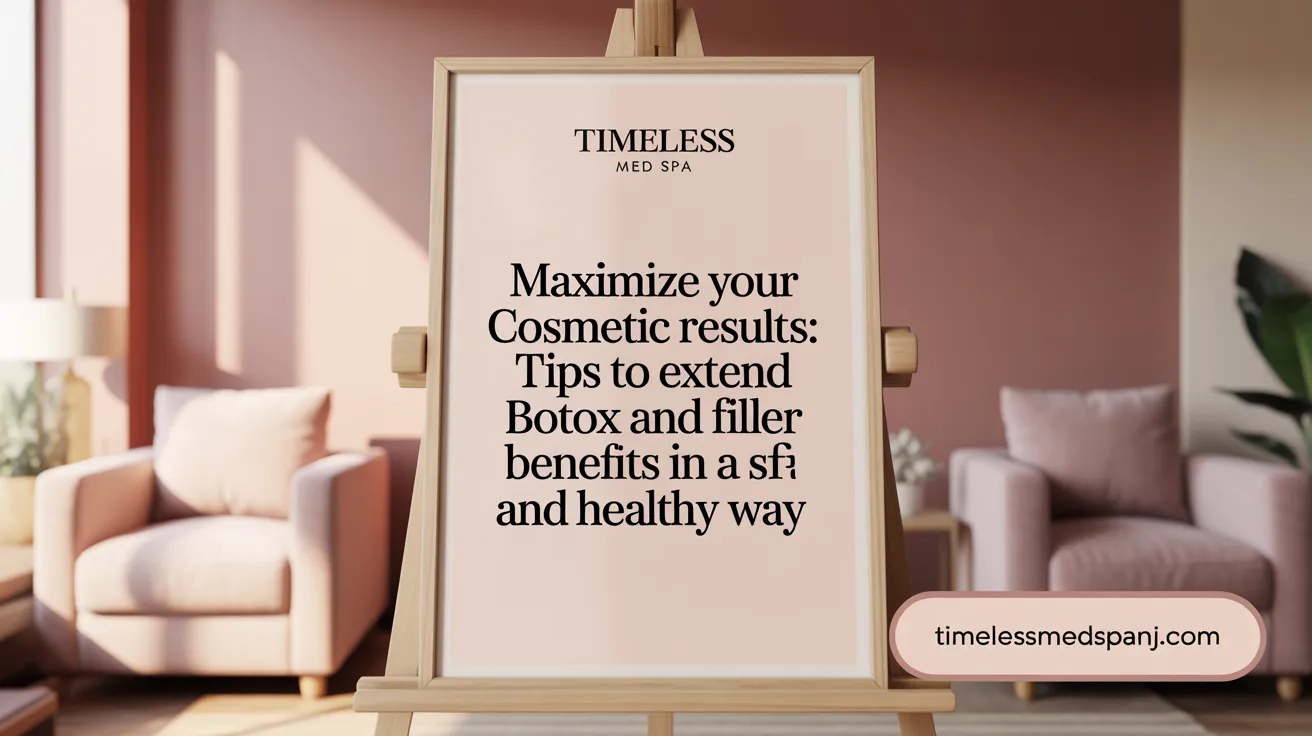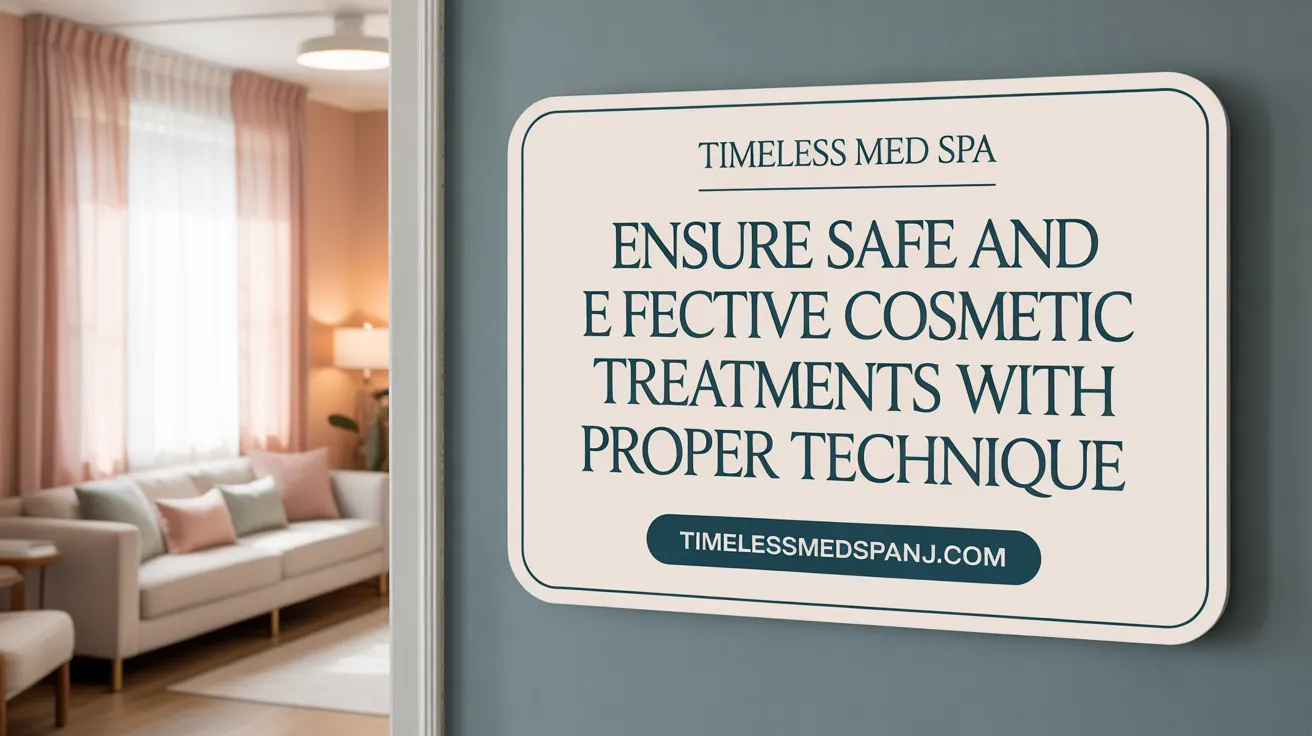Exploring How Long Botox and Fillers Really Last
Botox and dermal fillers are among the most popular non-surgical cosmetic treatments worldwide, celebrated for their ability to smooth wrinkles, restore youthful volume, and enhance facial contours. However, understanding how long these treatments last, what influences their longevity, and how to maintain their effects is essential for patients planning their aesthetic journeys. This article dives deep into expert timelines, physiological factors, and practical tips to help you maximize your results and plan maintenance effectively.
Botox: Onset, Peak Effects, and Duration

Typical timeline for Botox effectiveness
When receiving Botox, the first signs of improvement often appear within three to five days after the injection. Early subtle changes, such as slight smoothness or reduced creasing, can be observed as soon as this period. The most noticeable effects, including significant reduction in wrinkles and dynamic lines, typically develop over the following week, reaching their peak around 10 to 14 days post-treatment.
During this two-week period, the muscles become paralyzed or weakened, allowing the skin to appear smoother and more youthful. Patients are usually advised to wait at least two weeks before assessing the full extent of their results.
Variation in duration based on individual factors
The longevity of Botox effects can vary widely among individuals. Most treatments last between three and four months, but this timeframe can fluctuate based on factors such as age, muscle strength, skin condition, lifestyle, and the treatment area. Younger patients with less muscle activity may experience longer-lasting results, whereas older individuals or those with more active muscles might see effects fade sooner.
Dosage and injection technique also play vital roles. Higher doses or more aggressive injection strategies can extend the duration but may increase the risk of side effects. Conversely, professionals skilled in targeted placements tend to optimize results and longevity.
Duration by facial area and treatment frequency
Different facial zones respond differently to Botox. For example, forehead lines and crow's feet typically last 3 to 4 months. In contrast, treatments focused on areas like the jawline for slimming might last up to six months.
For individuals who undergo regular treatments, the effects can become more lasting over time. Repeated Botox sessions encourage the muscles to weaken progressively, leading to treatment benefits that sometimes extend beyond the initial active period, lasting 4 to 6 months.
Maintaining the results often involves scheduling repeat injections every three to four months, depending on personal response and cosmetic goals.
How Botox works physiologically over time
Botox works by blocking nerve signals to the muscles, preventing them from contracting and thereby reducing the appearance of wrinkles and lines.
After injection, the toxin starts to work within days, disrupting nerve transmission. As nerve endings regenerate and new nerve endings form, muscle activity gradually returns, causing the effects to fade. This regeneration process accounts for the gradual wear-off over three to four months.
Supportive skin care, avoiding excessive facial movements immediately after treatment, and lifestyle factors such as sun protection can influence how long the results last. Consistent treatments may lead to longer-term muscle weakening and smoother skin appearance, making the effects last even longer over time.
Dermal Fillers: Longevity and Influencing Factors
How long do dermal fillers last, and what factors influence their longevity?
Dermal fillers are popular for their ability to restore volume, smooth wrinkles, and enhance facial contours, and their effects can last from several months to several years depending on various factors.
The type of filler used plays a significant role in how long results are visible. Hyaluronic acid (HA) fillers like Juvéderm and Restylane generally provide results lasting between 6 to 18 months. Some patients may notice residual effects beyond this period, especially in less mobile areas such as the cheeks or under the eyes, where the fillers can extend up to 24 months. Lip fillers tend to last 6 to 12 months, partially due to constant movement and the thinner nature of lip tissue.
Longer-lasting options include calcium hydroxylapatite, which can maintain effects around 12 months or more, and poly-L-lactic acid (PLLA) fillers like Sculptra, which can produce effects for over 2 years by stimulating natural collagen production. Polymethyl methacrylate (PMMA) microspheres are semi-permanent, with results that can last five years or longer, often requiring fewer touch-ups.
Various factors influence how long fillers remain effective. These include:
- The specific filler material and its crosslinking properties
- The area treated, as highly mobile zones such as lips or near the mouth see quicker breakdown
- The depth of injection, with deeper placements lasting longer
- The patient’s metabolic rate and lifestyle habits
- Sun exposure, smoking, and skin care routines can accelerate filler degradation
Regular maintenance treatments and proper aftercare can help prolong the results. In addition, individuals who avoid habits that damage skin collagen—like smoking or excessive sun exposure—and adopt healthy skincare routines often enjoy extended benefits from their filler treatments.
How do fillers integrate and affect collagen production?
When injected, fillers such as hyaluronic acid initially hydrate and volumize the tissue. Over time, some fillers promote collagen production, which can improve skin quality and extend the lifespan of the results. For instance, PLLA and Radiesse stimulate natural collagen synthesis, providing both immediate volume and longer-term tissue support.
The process of integration involves the filler settling into the tissue, gradually blending with the body's natural structure. This process can take several weeks, and the ongoing collagen boost can lead to more youthful, firm skin beyond the initial effects.
In summary, the longevity of dermal fillers varies greatly based on material, treatment area, technique, and lifestyle choices. Consulting with a qualified practitioner ensures personalized treatment plans that optimize both immediate and long-term results.
Healing Stages and Visible Effects Post-Treatment
After Botox injections, patients typically notice initial signs of muscle relaxation and softer skin within 3 to 5 days, with the full effects becoming apparent around two weeks post-treatment. The earliest visible changes include a reduction in the appearance of wrinkles and smoother skin, although some minor redness, swelling, and bruising are common immediately after the procedure. These side effects are temporary and usually resolve within 1 to 2 weeks, making gentle post-care practices important.
For dermal fillers, the healing timeline varies slightly. Initial swelling and bruising are common right after treatment, but these effects tend to diminish within a few days to a week. Visible results in areas like lips, cheeks, or under the eyes generally start appearing within one to two weeks. Over the following weeks, fillers integrate progressively into the surrounding tissue, leading to improved contour and volume refinement. The full benefits of fillers may take up to four weeks to develop as the body naturally absorbs the material and tissues adjust.
The overall healing process involves several stages. First, minor side effects such as redness, swelling, and tenderness occur at the injection sites. These typically peak within the first few days and gradually fade. Next, visible improvements—such as fewer wrinkles or fuller cheeks—become more prominent, especially with continued tissue support and collagen stimulation. The integration phase of fillers involves the product settling into place and bonding with water in the tissues, enhancing smoothness and natural look.
To optimize healing and results, patients should adhere to best practices. This includes avoiding strenuous activities immediately after treatment, protecting the skin from sun exposure, staying well-hydrated, and following specific post-care instructions provided by their practitioner. Gentle skin care and avoiding pressure on the treated areas can also help minimize side effects and support quicker recovery.
In summary, understanding the healing stages—timing of side effects, gradual improvement, and tissue integration—can help set realistic expectations and promote optimal outcomes from both Botox and filler procedures.
Variations in Duration Across Different Facial Areas

How do the duration and effectiveness of Botox and fillers vary across different facial areas?
The lifespan and results of Botox and dermal fillers are influenced greatly by the specific facial region being treated. Botox, which works by relaxing active muscles, typically maintains its effects for about three to four months in areas with high muscle activity such as the forehead, crow's feet, and glabellar lines. In regions where muscles are less active, like the jawline or neck bands, Botox can last longer—up to six months.
Fillers, especially those based on hyaluronic acid, generally provide longer-lasting results. For example, lip fillers tend to last from six to twelve months, thanks to constant movement which accelerates breakdown. Cheek fillers can endure for 12 to 18 months, as these areas have less frequent motion than lips. Biostimulant fillers like Sculptra or Radiesse, which stimulate collagen production, can last over two years, making them suitable for long-term volumizing.
The effectiveness of these treatments hinges on various factors such as muscle activity, skin mobility, and individual metabolism. Active muscles and mobile skin areas tend to see quicker dissipation of product effects, whereas less flexible regions hold the benefits longer.
Impact of muscle activity and skin mobility
Muscle strength and how frequently facial muscles move directly impact how long Botox and fillers last. Areas with stronger muscles, such as the masseter or chin, may see effects diminish sooner unless reinjected regularly. Conversely, areas with minimal movement, like the temples or cheekbones, often preserve results longer.
Skin mobility also plays a role. Regions with more flexible or thinner skin may show earlier breakdown or dispersal of fillers, affecting longevity.
Customization of treatment plans based on area dynamics
Effective aesthetic procedures involve tailoring treatments based on the unique characteristics of each facial region. A skilled injector considers muscle strength, skin type, and movement patterns to optimize product choice, placement, and dosage.
For example, strategic placement in areas prone to rapid movement may involve using longer-lasting fillers or adjusting the volume to sustain results.
In addition, maintaining skin health through proper skincare, sun protection, and lifestyle choices can further enhance the durability of both Botox and fillers.
| Facial Area | Typical Botox Duration | Typical Filler Duration | Remarks |
|---|---|---|---|
| Forehead | 3-4 months | 6-18 months | Active muscles, high movement |
| Crow’s feet | 3-4 months | 6-12 months | Repeated motion |
| Glabellar lines | 3-4 months | 6-12 months | Frequent expression |
| Cheeks | 3-4 months | 12-18 months | Less movement, high volume |
| Lips | 2-3 months | 6-12 months | Constant motion |
| Jawline | 4-6 months | 12-24 months | Lower muscle activity |
| Under-eye | 2-3 months | 9-12 months | Thinner skin, delicate area |
Understanding these variations allows practitioners and patients to set realistic expectations and develop personalized treatment schedules that maximize the longevity and aesthetic benefits of Botox and fillers.
Long-Term Effects of Consistent Botox Use

What happens to facial muscles and skin after 10 to 20 years of consistent Botox use?
Many individuals who undergo Botox injections regularly for over a decade or two experience notable changes in their facial muscles. Due to the repeated paralysis of specific muscles, these muscles tend to weaken and undergo atrophy, meaning they gradually decrease in size and strength.
This process can lead to a reduction in muscle mass in areas frequently treated, such as the forehead, around the eyes, and the glabellar region. As the muscles shrink, the skin above them often appears smoother and may contribute to a more youthful appearance initially. However, over time, this muscular weakening can alter how facial expressions are expressed and perceived.
The skin itself generally does not become thinner solely as a result of Botox. Instead, natural aging continues to affect skin elasticity and thickness, independent of Botox treatments. Despite this, some individuals notice decreased natural muscle movement, which can influence the dynamic quality of their facial expressions.
Long-term Botox users may find that they need fewer treatments as muscles become less active or prominent over time. In some cases, muscular changes may become permanent, meaning that even after stopping treatments, the affected muscles remain less developed.
Overall, consistent Botox use over years can lead to lasting muscular adaptations, impacting both the appearance—often resulting in a smoother, less wrinkled face—and facial functionality. While for many this is beneficial, especially in reducing deep wrinkles, it also raises considerations about natural expression and facial mobility. Scientific research supports the idea that chronic muscle paralysis can induce muscular atrophy, which can persist long after treatment discontinuation, emphasizing the importance of carefully planned long-term aesthetic strategies.
Key Tips to Prolong Botox and Filler Results

What tips can help prolong the results of Botox and dermal fillers?
To maximize the longevity of your Botox and filler treatments, a combination of proper maintenance, lifestyle choices, and professional care is essential.
First, adhering to recommended treatment schedules is crucial. For Botox, most patients benefit from repeat injections every 3 to 4 months. Regular follow-up treatments help maintain muscle relaxation and prevent the reappearance of wrinkles. Similarly, dermal fillers usually require touch-ups at intervals of 6 to 18 months depending on the type used, treatment area, and individual metabolism.
A healthy skincare routine can significantly influence how long your results last. Gentle cleansing, daily use of moisturizers enriched with antioxidants, and consistent sun protection with a broad-spectrum SPF can help protect your skin from premature aging and reduce the breakdown of fillers and Botox.
Lifestyle factors also play a vital role. Avoid excessive sun exposure, smoking, and activities that cause facial tension, such as frequent squinting or frowning, which can accelerate the aging process and diminish treatment outcomes. Incorporating relaxation techniques like mindfulness or facial exercises can reduce muscle strain.
Hydration and diet are equally important. Drinking plenty of water and eating a nutrient-rich diet support skin health and overall body function, enhancing treatment longevity. Avoiding skin irritants or conditions that cause redness and flushing can also preserve the effects.
Lastly, the choice of a highly qualified, experienced injector is fundamental. Skilled professionals can optimize injection placement, dosage, and technique, which directly impacts how long the results will last. Proper technique ensures even distribution, reduces unwanted side effects, and enhances lasting results.
By following these tips, patients can enjoy smoother, more youthful appearances for longer periods, making the most of their Botox and filler treatments.
Safety Guidelines and Expert Practices in Botox Administration

Why are proper injection techniques and safety measures crucial?
Administering Botox requires precision and adherence to safety standards to ensure effective results while minimizing risks. Skilled practitioners understand facial anatomy thoroughly, allowing them to target muscles accurately without affecting nearby structures. Proper technique not only enhances the natural look of treatment outcomes but also reduces the chances of side effects such as swelling, bruising, or unintended muscle paralysis.
What is the significance of the “2cm rule” in Botox treatments?
The “2cm rule” is a widely recognized safety guideline for Botox injections, especially around the eyes. It recommends that injections be placed at least 2 centimeters away from the orbital rim— the bony edge of the eye socket. This distance acts as a buffer zone to prevent Botox from spreading into muscles responsible for eyelid elevation, which could cause ptosis or drooping eyelid. Skilled injectors use this rule to maintain control over the medication’s diffusion, reducing the risk of unintended effects.
How can avoiding side effects like ptosis be achieved?
Preventing ptosis involves meticulous attention to injection placement and technique. Adhering to the 2cm rule near the eyes is a primary measure. Additionally, using precise dosing, selecting appropriate muscles, and avoiding excessive volumes help prevent over-paralysis of targeted muscles. Post-injection care, such as instructing patients to remain upright and avoid rubbing the treated area, further reduces the chances of Botox migrating to unintended muscles.
Why is individualized treatment planning important?
Every face is unique, requiring customized treatments based on individual anatomy, muscle strength, and aesthetic goals. Experienced practitioners evaluate facial structure, muscle activity, and skin condition before administering Botox. This personalized approach ensures optimal results while minimizing side effects. Adjusting injection sites and doses according to each patient’s features is essential for natural-looking, harmonious outcomes and lasting satisfaction.
| Aspect | Details | Purpose |
|---|---|---|
| Injection Technique | Precision targeting, proper dosing, and placement | Ensure effective results and reduce side effects |
| The 2cm Rule | Minimum 2 cm distance from the orbital rim | Prevent ptosis and unintended muscle paralysis |
| Post-care Practices | Keep upright, avoid rubbing treated areas | Minimize migration of Botox, reduce side effects |
| Customized Treatment Plans | Facial analysis, muscle evaluation, tailored dosing | Achieve natural results and enhance safety |
Follow-up consultations and tailored treatment strategies, combined with professional expertise, significantly improve the safety and satisfaction of Botox procedures. Understanding and implementing safety guidelines like the 2cm rule are vital components of responsible cosmetic practice. For more information, searching “Botox 2cm rule safety guidelines” offers detailed insights from reputable sources.
Planning Your Botox and Filler Journey Wisely
Understanding the timelines and factors influencing the duration of Botox and dermal fillers allows patients to set realistic expectations and make informed decisions about their aesthetic treatments. Both Botox and fillers offer effective, though temporary, enhancements that can be tailored to individual needs and facial areas. By embracing expert advice on treatment intervals, post-care, and lifestyle habits, patients can extend the longevity of their results and enjoy a smooth, youthful appearance longer. Safety practices and customized approaches further ensure optimal outcomes with minimal risks. Ultimately, well-informed planning with trusted clinicians is key to maintaining your rejuvenated look while adapting to its natural progression.
References
- How Long Does Botox Last? Timeline, Results & Expert Tips
- Botox Timeline from Immediate to 6-Month Results | Irvine, CA
- How Long Do Botox and Fillers Last? Timeline by Treatment Area
- The Timeline for Your Dermal Fillers to Fully Settle - VIVAA
- How Long Do Botox's Effects Last? Expert Insights & Tips
- How Long Do Dermal Fillers Last? The Definitive Guide
- How Long Do BOTOX® & Dermal Fillers Last? 6 Top Treatment Areas
